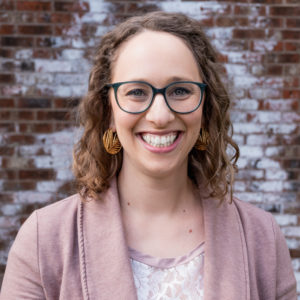
Pedagogy in a Pandemic: Best Practices for Teaching Online during Covid-19
Princeton Theological Seminary recently doubled-down on its commitment to residential theological education. As you can imagine, the transition online for an institution that has no online degree programming has been a shock to the system. However, last year, the seminary opened an Office of Digital Learning. With attentiveness to the needs of learners during this unprecedented time, we have been able to transition smoothly and have received overwhelmingly positive feedback from both students and faculty. As the Digital Learning Designer for the seminary, I have three suggestions for effective theological education during this crisis that I would like to share with you. I hope these ideas will inspire meaningful teaching and learning now that you’ve done the challenging work of transitioning online.
#1 PRIORITIZE CONNECTION
Right now, students may be feeling particularly unmotivated if what you are teaching seems abstract or disconnected from their lived experiences during this pandemic. By connecting your teaching to what they are experiencing, you will deepen the learning that takes place.
Here’s what one PTS faculty member said about how they’re doing this:
In today's class it was clear that many--especially those with children--are highly anxious. We tried to channel that anxiety--and the class's broad level of concern for what's happening in the world--directly into our discussion. . . if they were going to take time away from their families under these circumstances of global crisis, the class by golly had better be worth it. It had better be relevant to the crisis they/we are all experiencing. I found this to be very profound and instructive for seminary education in general. I will try to carry that sense of urgency and relevance into the other class as well to try to generate more investment on the students' part.
Draw upon what’s going on in the world and in students’ lives right now and integrate that into your teaching. The best learning takes place when students are motivated and when content is relevant to their lives.
For more, click here to read an article by Craig E. Abrahamson, a Professor of Psychology at James Madison University, about motivating student learning through personal connection.
#2 CHOOSE LEARNING OVER CONTENT TYRANNY
Content tyranny is what happens when you prioritize your content over student learning, when you become more focused on covering material than on cultivating growth. Your content is valuable, and you are most likely passionate about it. However, by letting go of some of your content, you may free up your students to learn better. If the current situation has forced you to drop some course content, let this reassure you. More content does not necessarily lead to more learning. Rather, students will learn better when you select your content carefully, deliver your content thoughtfully, and connect your content intentionally to their lived experiences.
For more, click here to read an article by John G. Radzilowicz and Michelle B. Colvin from the University of Pittsburgh about reducing course content without compromising quality.
#3 EMBRACE A CREATIVE SPIRIT
You are all probably already doing this! The best teaching is a mix between science and art, and, in times like these, pedagogy feels more like artistic expression. If you are still engaging in synchronous learning, each online class session will be a practice in improvisation while teaching. Any number of difficulties might arise, but you can handle these with confidence and grace if you embrace a flexible and creative spirit. As a theological institution with a Reformed heritage, the faculty and staff also trust that the Holy Spirit is at work in the teaching and learning endeavor and in your creative improvisation. Even if technology fails and your words seem jumbled, we trust that the Holy Spirit is at work.
For more, click here to read an address by Emilie Townes, the Dean of Vanderbilt University Divinity School, about teaching and the imagination.
Taking classes online within a few weeks’ notice is no small task for faculty, students, or staff. At Princeton Theological Seminary, we are learning just how important each individual person is in the process of creating a robust learning environment. We are also learning how essential it is to be attentive to learners’ needs, to be willing to prioritize learning over content, and to be open to the imagination. May you all engage in meaningful connections with your colleagues and students and may you be open to the creative work of reimagining pedagogy during this pandemic.
Has your institution embraced or struggled with these elements over the past few weeks? Has there been monumental growth, or is this culture of teaching already well established? Would you add a fourth insight to the list?
Leave a Reply